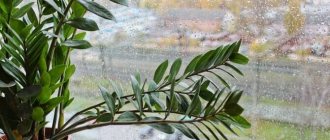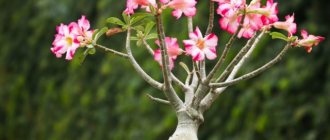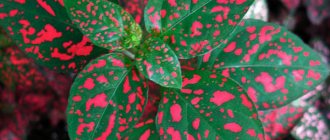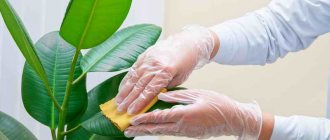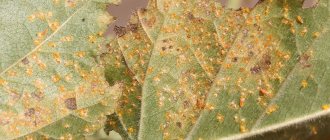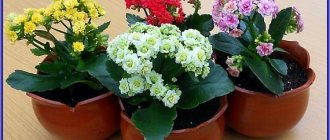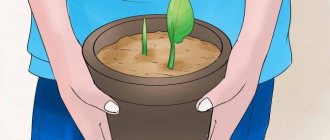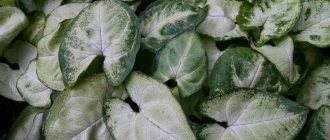A unique plant, which is the object of adoration for many gardeners, the bonsai tree is considered a real exclusive among indoor flowers. Experienced professionals can grow a copy of a real tree that fits on a coffee table, but even novice gardeners can start a bonsai and care for it.
Is it possible to keep a bonsai tree at home?
According to the teachings of Feng Shui, any living plant affects the energy of the room in which it is located. A mini bonsai tree can even out unstable flows of energy in rooms of complex shape. It can be confidently installed in attic rooms with uneven ceilings and walls, in dark corners far from natural light, next to doors. You can enhance the influence that a bonsai tree has on the atmosphere in your home if:
- charge water for watering plants with precious stones and metals;
- talk to the bonsai and treat it without malice;
- periodically play pleasant classical music for the tree.
Where to get seeds of maple and other trees
Bonsai seeds can be found in botanical gardens or even public parks, where beautiful and often unique trees often grow. If you do not have such an opportunity, then you can always buy seeds for growing bonsai at home. This can be done online or through live plant stores, either locally or by order. But you shouldn’t be particularly deceived by the beautiful images on the packages of seeds that are sold, because what you are buying is only planting material, from which the desired bonsai will be obtained only as a result of special efforts, knowledge and labor.
Which tree to choose for bonsai?
When thinking about which dwarf plant to choose, it is worth considering the variety of types of miniature trees that are suitable for growing at home. An important criterion is the height of the future tree; you need to pay attention to this factor before buying a bonsai for your apartment. Many mini-trees grow beautifully at home and can decorate the interior of any room. The following types of small plants grow best and do not cause much trouble:
- citrus fruits – lemon, tangerine and others;
- pomegranate;
- ficus benjamina;
- willow;
- Apple tree;
- maple;
- pine.
How to choose a plant for bonsai
You can grow bonsai of any type: all deciduous and coniferous trees, flowering or decorative deciduous. Any of them will (and should) repeat the natural cycle. The best choice is plants with small leaves and a lot of branches.
Typically, a bonsai tree is no more than half a meter in height. And superminiature ones can be up to 3 cm. Huge bonsai are only 150 cm and no more
There are specific species recommended for bonsai:
- Japanese quince, wild, Chinese;
- hawthorn;
- small-leaved elm, squat;
- Canadian spruce, common;
- common larch;
- Chinese juniper;
- aspen;
- ficuses (almost all, but the best is Benjamina);
- small-fruited apple tree (may have red or green leaves), wild;
You can keep bonsai both in the house and in the garden. Choose a location for each individual. It is not recommended to change it.
Every season has its own charm
Please note that deciduous plants will change color and shed leaves in the fall, and bud and bloom in the spring. If you don't want to see bare branches in winter, choose something evergreen. For example, conifers or other evergreen species.
For beginners, the best choice is ficus benjamina. It grows quickly, has small shiny leaves and a trunk that thickens on its own. Already at 5 years it will look like an old tree.
Form your first bonsai from ficus benjamina
At the same time, you can try to grow a coniferous or deciduous seedling. At the same time you will understand the difference.
Bonsai tree pot
A simple pot is not suitable for a mini-tree. When choosing a container in which the plant will grow and develop, you need to remember the translation of the word “bonsai” - tree on a tray. A dwarf tree requires a special pot, low and wide, similar to a dish with low sides. Light materials such as plastic are not suitable for the place in which the bonsai will grow - as the plant ages, it gains weight and may fall. Massive containers and bowls for planting a bonsai tree made of clay and ceramics of various shapes can be found in specialized stores.
Watering, fertilizing, wintering
The tiny trees are grown in small pots, so watering must be done very carefully. Two methods are used:
- Irrigation. Moistening the soil using a small watering can with a thin spout.
- Immersion. It is important that there are drainage holes in the bottom of the pot. The container with the plant is immersed in a basin filled with water for 5-10 minutes.
Note! Rainwater or tap water that has stood for at least 48 hours is suitable for irrigation.
For feeding, mineral complexes enriched with nitrogen, potassium, and phosphorus are used. You can also take fertilizers for indoor plants, but at a concentration of 50%, this will prevent excessive growth of shoots and foliage. Feeding rules:
- For the summer period, the potassium content is reduced.
- In spring and autumn, compositions rich in nitrogen and phosphorus are chosen.
Preparation for winter involves cleansing the plant of damaged and dried shoots and destroying pests. The pots are moved to a bright place, protected from drafts and blowing.
A bonsai garden is a dream that can come true. A variety of coniferous, deciduous and even fruit trees in miniature can be grown from seeds, the main thing is to follow the recommendations.
Bonsai tree soil
The right soil can provide the plant with the necessary nutrition and moisture. Not every land is suitable for growing dwarf trees. Akadama - a special nutritious soil mixture for bonsai consists of several layers of clay, sand, humus, combined in certain proportions. Depending on the type of plant, akadama is prepared in different ways.
- A deciduous bonsai tree needs soil prepared from seven parts of earth and three parts of washed river sand.
- For flowering trees, a mixture consisting of seven parts soil, two parts sand and part humus is required.
- The coniferous bonsai tree grows well in a mixture prepared according to the proportions: two parts earth and two parts sand.
Seed stratification
In the natural environment, many crops drop their fruits in the fall to the ground, where they lie under a layer of leaves and snow until spring. An artificial imitation of this process is called stratification, and consists in keeping the seeds for 3-5 months in a cold, dark place - a basement or refrigerator. During this period, the biological processes necessary for the development of the future plant are completed inside.
This procedure is carried out exclusively for the seeds and fruits of deciduous representatives of the flora of the temperate climate zone - oak, beech, chestnut, walnut, ash, maple, rowan. It consists of the following stages:
1. Disinfection of seeds. Exposing them to the sun for a week, 2-3 minutes of irradiation with an ultraviolet lamp (a regular manicure lamp will do), half an hour soaking in a warm solution of potassium permanganate or 3% hydrogen peroxide heated to 35 degrees will help destroy pathogenic fungi and bacteria on the surface of the seeds.
bonsay-2-1000×429.jpg
2. Soaking in water - can last from 6 hours to 2-3 days, depending on the size and density of the fruit, nut or seed.
dry-acorns-for-crafts-step-2.jpg
3. Immersion in the substrate. Sand, peat, sawdust are poured into a container, watered abundantly, seeds are placed in layers between them, which are also covered with a loose mixture on top and covered with breathable fabric (in no case with polyethylene or an airtight lid).
33112_1000.jpg
4. Keeping in a cold dark place at a temperature of +1...5°C - a basement, unheated corridor, pantry, balcony or the warmest shelf in the refrigerator will do.
How to grow a bonsai tree?
A miniature copy of your favorite plant, placed on a coffee table, will delight the owners for a long time. It is possible to grow a bonsai tree yourself, but in this matter you must follow important rules, without which it is difficult to achieve success. The art of bonsai requires patience, time, desire and true inspiration from the owner. You can grow a mini-tree from seeds or cuttings, or you can form a bonsai from a money tree, or any indoor flower. The process of growing a dwarf plant comes down to the main points:
- slowing down tree growth;
- formation of plant shape.
How to make a bonsai from a plant?
You can form a miniature tree from a houseplant with a developed above-ground part, for example, from a fat plant, using certain tricks. Knowing how to trim a money tree to make it a bonsai, how to properly intertwine the trunks of the plant and not damage them, you can get a beautiful and unusual indoor tree that will surprise your guests. Forming a fancy shaped trunk for bonsai can be done using strong but soft wire. To do this, the plant trunk is tilted and fixed in this position with a wire.
How to grow bonsai from cuttings?
When choosing a method for growing a mini-plant, you need to pay attention to the fact that from a cutting you can quickly get a full-fledged bonsai tree, as long as it grows, it is known: from a cutting a tree is grown a year faster than from seeds. This method is called “sashiki”; its advantages are considered to be economical and reduce the time of plant growth. To get a small bonsai tree you will have to make an effort and follow the step-by-step instructions:
- Cut a cutting of the plant you like - a twig 5-10 cm long, 4-5 cm thick.
- Plant the cuttings in the ground at an angle of 45°, cutting off the shoots.
- Water the branches periodically, monitor the temperature, and avoid hypothermia.
- When the plant takes root, transplant it into a bonsai pot, shortening the roots.
- You can start pruning the crown when the tree trunk grows to 30 cm in length. The branches need to be cut and wrapped with soft wire.
- To slow down the growth of a bonsai, you need to make several horizontal cuts along the tree trunk.
- By bending the trunk of a plant and fixing it with wire, you can achieve the formation of various tree shapes.
How to grow a bonsai tree from seeds?
The second way to grow a mini plant is to grow special seeds. In order to figure out how to plant a bonsai tree from seeds, you should remember the concept of stratification, this is a procedure in which seeds for planting are kept in the refrigerator for several months at a certain humidity. The prepared seed quickly awakens when exposed to heat, if you follow certain rules:
- The best time to plant bonsai seeds is during the spring months.
- It is better to use sand-peat substrate for sowing seeds.
- Before the first shoots appear, the container with the seeds should be in a dark place; the seeds germinate well under a film in a greenhouse.
- The greenhouses with seeds must be ventilated periodically.
- As soon as the first shoots appear, future bonsai need to be brought into the light, regularly watered and fertilized
- It is necessary to replant the plants when the size of the sprouts is 10-12 cm.
- When replanting, the roots of future trees should be cut off by a third.
Bonsai styles
This art is more than two thousand years old, so there are more than two dozen main styles alone. The very first thing to do is to choose the style in which you will form your miniature tree.
Basic Bonsai Tree Styles
Please note that styles differ not only in the presence or absence of a slope, the number of trunks, but also in the location of the main branches. If you like a particular style, find its detailed description and several photographs. All this will be required when forming the trunk and crown.
And these are not the smallest ones
There is also a division of bonsai trees by size. There are five main classes, and three of them also have gradations. The sizes of bonsai trees are shown in the table below. There are also Russified analogues of Japanese/Chinese names.
| Class | Subclass | Bonsai tree height | Russian name | Bonsai Pot Dimensions |
| Mame | Keshi-Tsubu | less than 2.5 cm | Tiny | 3-8 cm |
| Sieve | from 2.5 cm to 7.5 cm | 5-10 cm | ||
| Gafu | from 8 cm to 3 cm | 10-15 cm | ||
| Sehin | Komono | from 13 cm to 17 cm | Small | 12-20 cm |
| Myabi | from 18 cm to 25 cm | 15-25 cm | ||
| Kifu | Katade Mochi | up to 40 cm | Average | 25-46 cm |
| Tyu/Tyukhin | Katade Mochi | from 40 cm to 60 cm | Big | 40-90 cm |
| Omono | from 60 cm to 120 cm | |||
| Dai/Daiza | Bonju | more than a meter | Huge | 75-125 cm |
Bonsai tree - care at home
Many lovers of exotic plants want to have a miniature tree, which is an exact copy of the real one. Caring for a bonsai is not an easy task, it requires:
- in the formation and pruning of the crown;
- regular watering;
- applying the necessary fertilizers;
- ensuring wintering that will not cause harm;
- pest protection;
- treatment for diseases.
Bonsai crown formation
In order for the crown of a dwarf tree to have a certain shape, there are special techniques. The growth of young branches with small leaves is promoted by regular pruning and pinching of the crown of a bonsai tree; caring for a plant without knowledge of these techniques will be incomplete.
- Pruning is used for mature plants in early spring. Large, unevenly growing trees need crown formation. By removing the side and top shoots with a sharp garden knife, you can create the correct shape so that the flower will not fall over and will begin to grow evenly. In summer it is necessary to prune again, removing weak shoots.
- Pinching is the removal of growth buds and is a necessary procedure in order to form a money tree bonsai. The branch on which four leaves have appeared is carefully pinched and then grows branched. This method gives a lush spherical crown, the trunk of the plant thickens.
Watering a bonsai tree
Caring for a miniature tree replica is different from caring for regular indoor plants. For the growth and proper development of a dwarf bonsai tree, regular watering with melted or well-settled water is important. In spring and summer, bonsai needs abundant watering; in winter, the amount of liquid must be reduced. There are several options for watering mini-trees:
- using a special watering can;
- by immersing the pot in water;
- using a drip irrigation system.
Fertilizers for bonsai
Like any plant, a bonsai tree needs regular feeding. Every 2-3 weeks, dwarf plants must be fertilized with special mineral compounds. A living bonsai tree should be fed carefully; it does not like excess fertilizer. Depending on the type of plant, it is necessary to correctly select the composition of the mixture for fertilizing. General recommendations from experts regarding the content of beneficial microelements are as follows:
- In the spring months, when bonsai is actively growing, it requires nitrogen-containing fertilizers more than those containing potassium and phosphorus.
- In summer, with the same proportions, it is recommended to reduce the amount of mineral mixtures by half.
- Before the autumn period, the content of potassium and phosphorus in the fertilizer should be increased, and nitrogen, on the contrary, reduced.
- Plants that are actively flowering need fertilizers with a high potassium content.
Wintering bonsai
Leaving a mini-tree to overwinter in a room where the plant spent the spring and summer is wrong. Both coniferous and deciduous dwarf Japanese bonsai trees need rest during the winter. Preparations for wintering should begin in the fall: watering should be gradually reduced, pruning should be limited, and the plant should be taken outside to adapt to the colder weather. Cool basements with a stable temperature of at least +3°C are best suited for wintering. Winter care for bonsai comes down to observing the following rules:
- Watering during the winter months should be reduced to prevent the soil from drying out.
- You can take the bonsai outside, and be sure to cover it with spruce branches to protect it from frost.
- It is permissible to construct earthen pits for wintering dwarf trees.
How to propagate a bonsai tree?
It is possible to grow an exact copy of an existing bonsai if you root a shoot or cutting of an adult tree. This method is effective, and with proper care it is possible to get a small tree in a few years. By protecting the cuttings from excess moisture, drying out of the soil, excessive cold and heat, you can achieve good rooting and further growth of the plant. After the appearance of a developed root system, the plant must be transplanted into a bonsai pot, pruning the roots and forming the crown.
Popular types of trees to grow
Literally translated, the art of bonsai means “growing in a tray.” It allows you to get smaller copies of ordinary trees, coniferous and deciduous, by cutting roots, pruning shoots, and using a substrate poor in minerals. To create a unique garden of dwarf crops with a height of 2 to 110 cm, trees with long growth are used.
A bonsai tree will be a unique decoration for any room.
There are several groups of plants that can be grown in miniature:
- The lowest plants are from 9 to 20 cm tall. These are juniper, spruce, serviceberry.
- 20-30 cm high. Barberry, pine, maple are suitable.
- Reaching 30-70 cm. These are Scots pine, birch, hazel.
- Trees up to 60-100 cm. Choose oak, larch, black pine.
- The tallest representatives are more than 100 cm. Acacias, chestnuts, and plane trees are grown in this way.
Note! You can create original green corners at home, where bonsai trees will harmoniously combine with lushly blooming roses or violets.
Some of the best plants for bonsai from seeds include the pepper tree or zanthoxylum, an unpretentious evergreen with dark bark and large, feathery leaves that emit a pleasant aroma. Well suited for creating living works of art.
A tiny variation of the olive tree also looks original; it is recommended that beginners start working with it. The tree has an unusual gray bark, the flowering period occurs in late summer - early autumn.
You can grow bonsai from almost any tree
Diseases and pests of bonsai
Like any plant, bonsai can be attacked by pests. An attentive owner can easily notice signs of mini-tree disease. Dwarf trees are known to suffer from the following insects and diseases:
- Aphids
like to be located on the underside of leaves and feed on the sap of the plant, which leads to drying of the leaves and stems. You can get rid of aphids using folk remedies - a solution of laundry soap, and special insecticidal agents - “Iskra”, “Aktara”, “Tanrek”. - The caterpillars
are very voracious and quickly attack bonsai trees. Their traces of appearance are difficult to miss: holes on the leaves, cobwebs are a distinctive feature of the appearance of these pests. You can get rid of caterpillars using the drugs “Arrivo” and “Apache”. - Nematodes
are small worms that attack dwarf trees. The stems, buds, and roots of the plant can be affected by these insects. “Nemagon”, “Karbofos” are drugs that have proven themselves in the fight against nematodes. - Scale insects
attack the stems and leaves of bonsai and look like multiple light-colored tubercles on the plant. The drugs “Akarin” and “Bankol” help in the fight against scale insects. - Mites
are dangerous pests that attack plants. It is not easy to notice ticks; they are small in size. Cobwebs on the leaves are the first sign of the appearance of these insects; you can fight them with the help of Fitoverm and Fufanon. - Rust
affects the upper part of the plant, as a result of which the bonsai may lose leaves; this is a fungal disease that can be treated with special products “Abiga-Peak” and “Cumulus”. - Verticillium
is an infectious disease that occurs when plants are pruned incorrectly. The leaves of the tree turn yellow and dry out, and the bonsai may die. This disease must be treated by removing the affected stems and leaves, as well as treating the plant with Polyram and Strobi.
The bonsai tree has dried up - what to do?
Errors in caring for a capricious dwarf plant can lead to illness and even death. If your home bonsai tree has dried out, you can save it if you understand the reason for its deterioration. Deciduous plants can shed leaves not only in the fall, but also under the wrong conditions. The faster you help a tree, the greater the chances of saving it. Common causes of bonsai death are:
- pest damage;
- improper plant replanting;
- watering errors;
- depletion of nutrient soil;
- incorrect light mode.
Popular bonsai trees that can be grown from seeds
Almost every tree can be grown in this way, but you also need to know about the popularity of one or another. For example, among the tropical ones, the most popular are boxwoods, myrtles, abutilons, leptospermums, acacias, wisterias and, of course, ficuses. Broadleaf trees include beeches, hornbeams, maples, birches, elms, Japanese beeches and pomegranate trees. Conifers include fir, cypress, spruce, cedar and pine.
